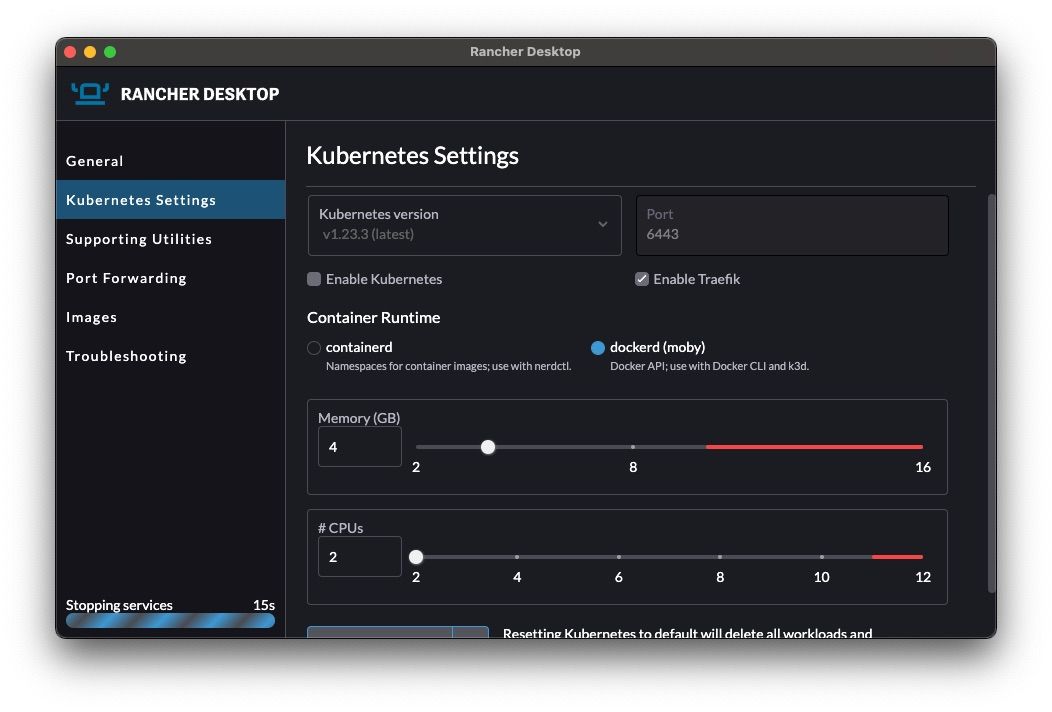

- Docker for mac kubernetes example how to#
- Docker for mac kubernetes example install#
- Docker for mac kubernetes example upgrade#

Open and you'll see your hello world response. If you have NodeJS installed on your local pc, then you can try to run the application with plain NodeJS.

The step after the next will utilize a Docker image that comes with a ready to use Node environment. file: server.jsĬonsole.log(`Running on FYI: It’s fine to skip the next step if you don't have NodeJS installed. "test": "echo \"Error: no test specified\" & exit 1",Īdditionally, we need to start the webserver and define a single endpoint. Let’s create a NodeJS package file and add a single webserver dependency called Express. If you have not installed Docker yet, you should do so.
Docker for mac kubernetes example how to#
How to Build and deploy a NodeJS web application using Docker and Kubernetes. The most used container technology to run containers on these hosts is Docker.Įnough said, let's get our hands dirty and experience the differences ourselves. In short, Kubernetes manages multiple hosts and deploys containers to them. The platform exerts its control over compute and storage resources by defining resources as Objects, which can then be managed as such. This extensibility is provided in large part by the Kubernetes API, which is used by internal components as well as extensions and containers that run on Kubernetes. Kubernetes is loosely coupled and extensible to meet different workloads. Here's how people define Kubernetes on Wikipedia: Kubernetes defines a set of building blocks ("primitives"), which collectively provide mechanisms that deploy, maintain and scale applications based on CPU, memory or custom metrics. There are alternatives to Docker that have similar properties like LC, rkt or containerd. In short, Docker is a platform to run immutable containers encapsulated with close to native performance on a desired machine. Docker uses the resource isolation features of the Linux kernel (such as cgroups and kernel namespaces) and a union-capable file system (such as OverlayFS) to allow containers to run within a single Linux instance, avoiding the overhead of starting and maintaining virtual machines." - Wikipedia This enables applications to run in a variety of locations, such as on-premises, in a public cloud, and/or in a private cloud. Here's how people define Docker on Wikipedia: "Docker can package an application and its dependencies in a virtual container that runs on any Linux server. In this article, you will get an explanation of Docker and Kubernetes, and you will build an example NodeJS web application and deploy it using both technologies. Both let developers to package applications into containers to run them in different environments.Īlthough you can achieve similar things using both, in practice they differ in their usage. Kubernetes integration provides the Kubernetes CLI commandĪt /usr/local/bin/kubectl on Mac and at C:\>Program Files\Docker\Docker\Resources\bin\kubectl.exe on Windows.Nowadays, two of the essential tools in a developer's toolbox are Docker and Kubernetes.
Docker for mac kubernetes example upgrade#
To upgrade your Kubernetes cluster to the latest version, select Reset Kubernetes Cluster. The status of Kubernetes shows in the Docker menu and the context points toĭocker Desktop does not upgrade your Kubernetes cluster automatically after a new update. When Kubernetes is enabled and running, an additional status bar item displaysĪt the bottom right of the Docker Desktop Settings dialog. To see these internal containers, select Show system containers (advanced).

This instantiates images required to run the Kubernetes server as containers, and installs the /usr/local/bin/kubectl command on your machine.īy default, Kubernetes containers are hidden from commands like docker ps, because managing them manually is not supported.
Docker for mac kubernetes example install#
To enable Kubernetes in Docker Desktop, go to Preferences > Kubernetes and then click Enable Kubernetes.Ĭlick Apply & Restart to save the settings and then click Install to confirm. Enabling or disabling the Kubernetes server does not affect your other Your workloads in parallel, on Kubernetes, Swarm, and as standalone containers. The Kubernetes server runs within a Docker container on your local system, and The Kubernetes server runs locally within your Docker instance, is not configurable, and is a single-node cluster. Docker Desktop includes a standalone Kubernetes server and client,Īs well as Docker CLI integration that runs on your machine.


 0 kommentar(er)
0 kommentar(er)
